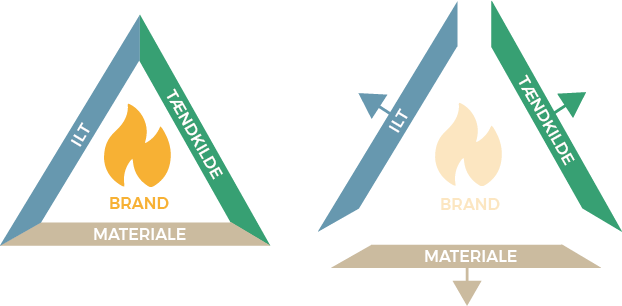How do fires occur in kitchens?
For a fire to occur, three basic conditions are required: Combustible material, ignition source and oxygen.
Combustible material in the form of various types of fats is present in large quantities as standard in a kitchen, which also offers a multitude of different heat sources that can lead to overheating if one is inattentive for even a brief moment. At the same time, there is always the risk of technical faults in electrical installations, which can quickly cause sparks or overheating that can ignite the flammable fats.
How to fight fires:
In practice, firefighting is done by removing one of the three elements that make up the fire triangle.
With an effective fire protection system, critical temperature increases are detected at a very early stage. This triggers an extinguishing agent that removes the oxygen supply to the fire, thus both effectively extinguishing the fire and preventing reignition by forming a sealing layer over the combustible material (the cooking fat).

![Homepage [EN]](/media/1554/logo.svg)







































